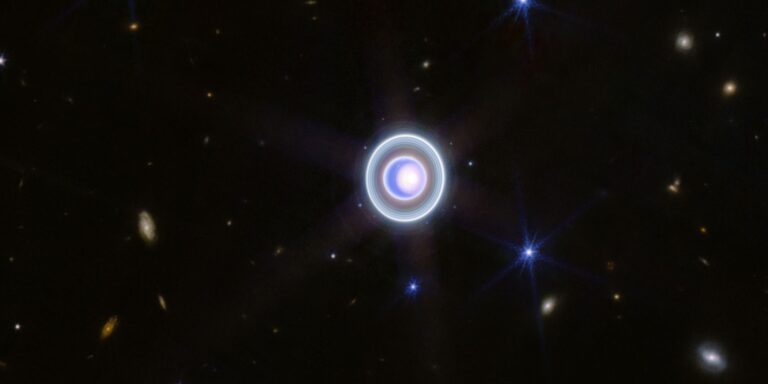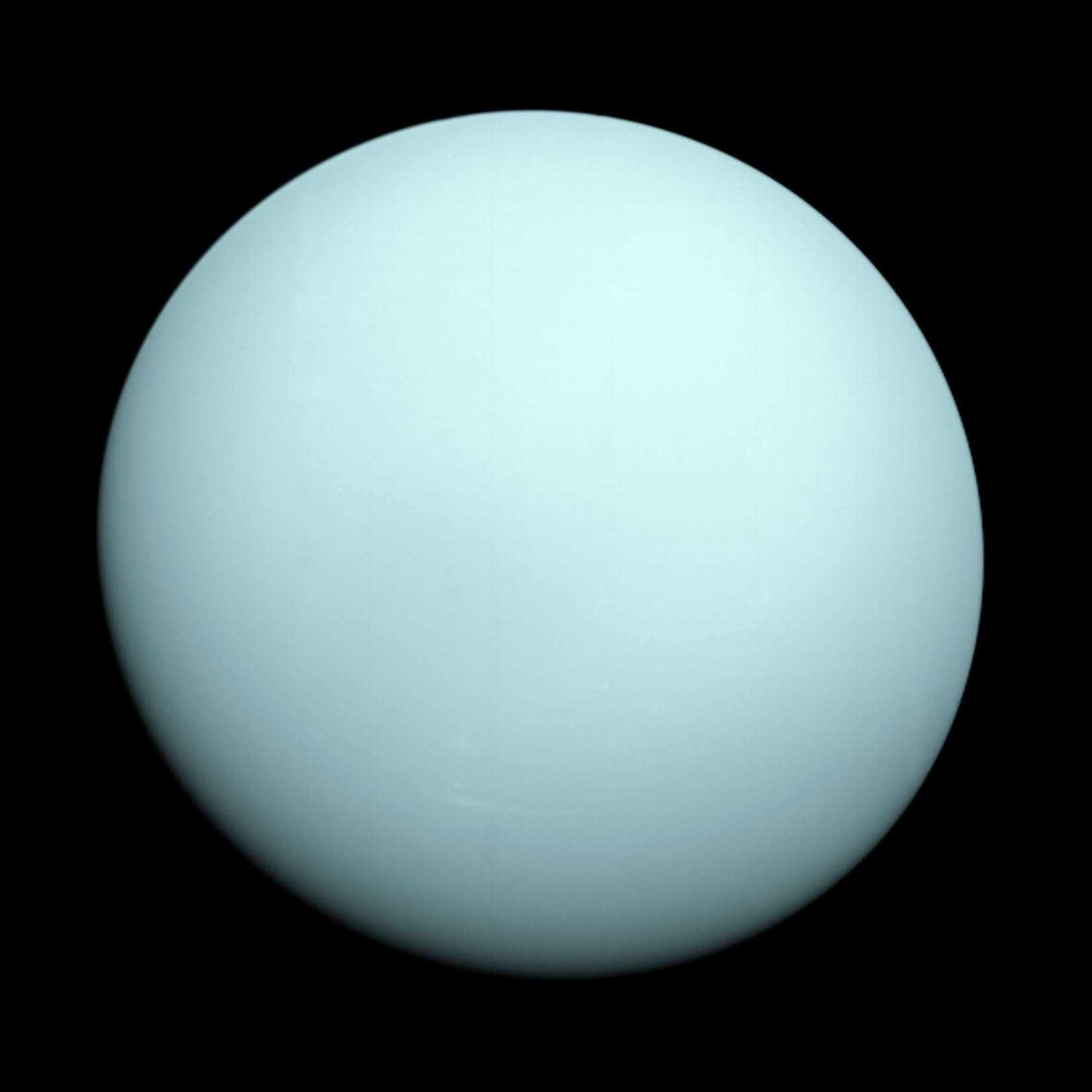[ad_1]
Astronomers utilizing NASA’s James Webb Area Telescope have found a tiny new moon orbiting Uranus, the primary addition to the ice large’s satellite tv for pc household in many years. Provisionally named S/2025 U1, the hidden moon was first detected on February 2, 2025, and at simply 10 kilometers (six miles) large it’s the smallest moon but discovered round Uranus and the smallest in our photo voltaic system!
Though the invention was made months in the past, it was solely simply introduced that Uranus now has a twenty ninth identified moon. I reached out to Dr. Matthew Tiscareno, a planetary scientist on the SETI Institute in Mountain View, California, who defined, “It takes time to do cautious evaluation and be very certain of such a momentous announcement.”
That comparatively tiny measurement explains why Voyager 2 utterly missed it throughout its 1986 flyby of the sideways planet, regardless of having “returned greater than 7,000 pictures, revealing 11 new moons, the innermost ones being intricately concerned with the ring system, and two new rings orbiting the planet,” writes NASA historian John Uri.
Voyagers 1 and a pair of, each launched in 1977 on a mission to discover Jupiter and Saturn, and because of a uncommon planetary alignment that happens as soon as each 175 years, Voyager 2 was in a position to proceed on a trajectory for years to fly previous Uranus.
It isn’t simply the scale that saved this moon hidden although, but in addition its positioning. “JWST is such an amazingly delicate digicam that it truly can see greater than Voyager may see, regardless of the a lot higher distance,” Matthew Tiscareno tells me. “Additionally, JWST can see the complete Uranus system directly, whereas a spacecraft in the course of the system can solely look in a single course at a time.”
The Smallest Moon Ever Found
“It’s situated about 35,000 miles (56,000 kilometers) from Uranus’ heart, orbiting the planet’s equatorial aircraft between the orbits of Ophelia (which is simply exterior of Uranus’ essential ring system) and Bianca,” mentioned Maryame El Moutamid, the lead on this latest Webb observing program learning the rings and moons of Uranus, mentioned of her discovery. “Its practically round orbit suggests it might have shaped close to its present location.” Tiscareno provides:
“The internal moons of Uranus are a posh and chaotic system. They in all probability trip between a hoop state and a moon state. Analyzing the orbit of this moon will give us extra perception into that dynamic, like discovering yet another piece of a jigsaw puzzle.”
For Tiscareno, probably the most thrilling half could also be what this discovery implies: there may very well be extra moons nonetheless hidden round Uranus. “That is by far the smallest and faintest of the internal moons we’ve found, and often smaller issues are extra quite a few,” he mentioned.
That is in all probability the primary amongst others.
Whereas this system’s knowledge has but to bear the peer-review course of, like all Uranus moons, S/2025 U1 will ultimately obtain a everlasting and extra enjoyable title, and as an alternative of drawing inspiration from Greek and Roman gods, Uranus’ moons are uniquely named after characters from Shakespeare and Alexander Pope.
Why Uranus Is The Most Distinctive Planet
With names like Titania, Oberon, Ariel, and Juliet already in use, S/2025 U1 will be a part of an unusually literary celestial household. I requested Tiscareno if he had any concepts in thoughts however he says they “cannot discuss any solutions which were made till the IAU approves them.”
The Worldwide Astronomical Union (IAU), over a century outdated, was shaped to advertise and safeguard “the science of astronomy in all its points, together with analysis, communication, schooling and improvement, by worldwide cooperation.”
Along with its distinctive moon naming conference, Uranus itself is without doubt one of the photo voltaic system’s strangest worlds. The ice large spins on its aspect with a tilt of practically 98 levels, seemingly the results of an enormous collision way back with an Earth-sized object, in line with NASA. This excessive orientation creates probably the most weird seasons within the photo voltaic system, with every pole experiencing 21 years of steady daylight adopted by 21 years of darkness.
One idea reported by National Geographic from analysis by Alessandro Morbidelli of the Observatory of Côte d’Azur in Good, France, in 2011 suggests Uranus was hit by two back-to-back impacts, which may clarify why the moons and rings additionally orbit Uranus on the identical tilted equator as an alternative of orbiting its poles.
One other study by Yuya Ishizawa of Kyoto College in 2017, carried out hypothesizes that particles from the large affect might have helped create the moons. Maybe this is the reason Uranus’ internal moons are so small.
Uranus options 13 rings and extra small internal moons than some other planet, blurring the road between the place rings finish and moons start. Almost 4 many years after Voyager 2 offered the one close-up take a look at Uranus, Webb is exhibiting that the sideways planet nonetheless holds surprises ready to be uncovered.
“We wish to proceed to review its orbit, which would require extra observing time from JWST,” Tiscareno explains after I ask about what’s subsequent for learning S/2025 U1. “Solely with extra observations can we actually unlock what this moon might have to inform us about its historical past and environment within the Uranus system.”
Pictures courtesy of NASA, ESA, CSA, STScI, and JPL-Caltech.
[ad_2]
Source link


